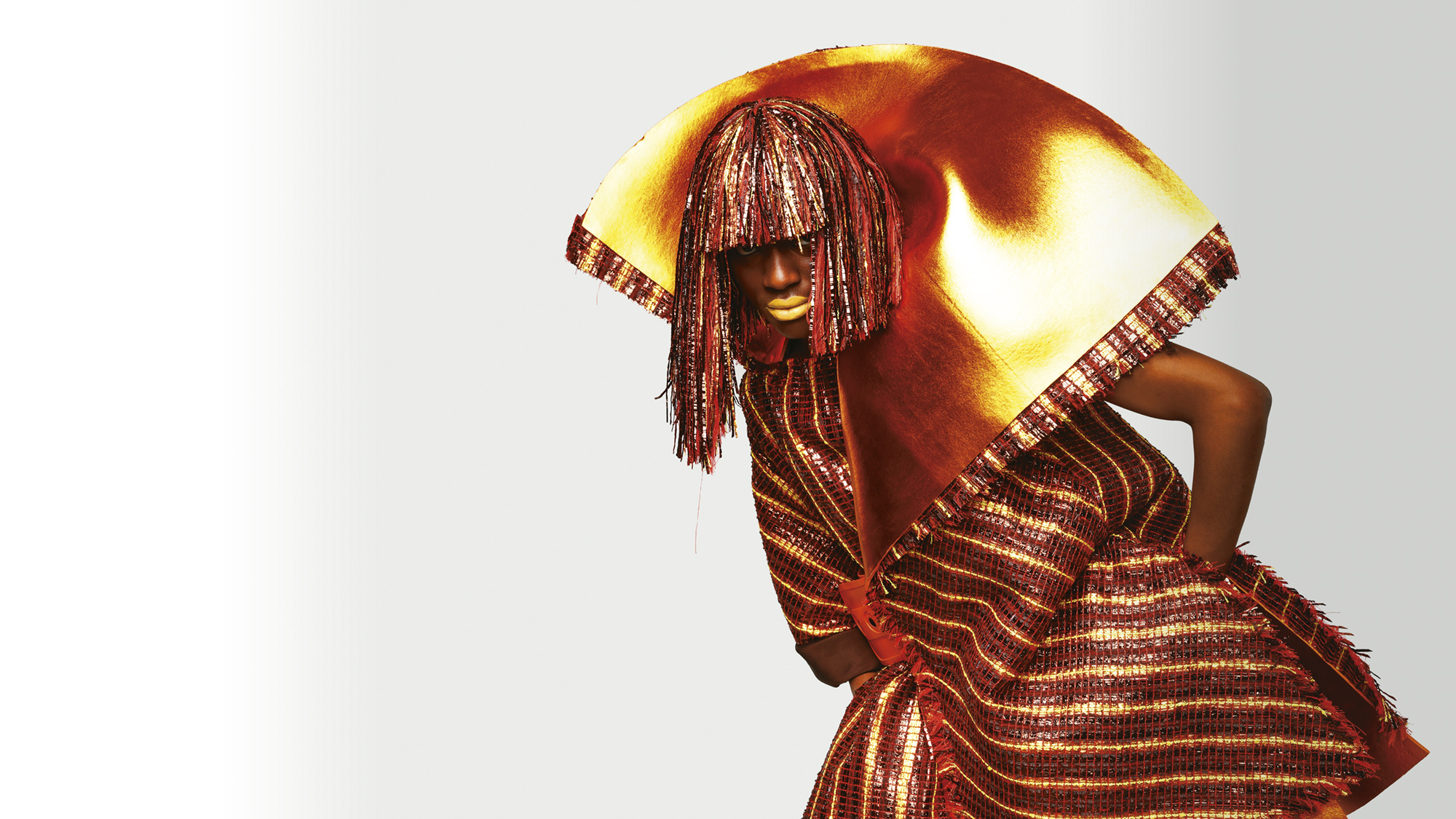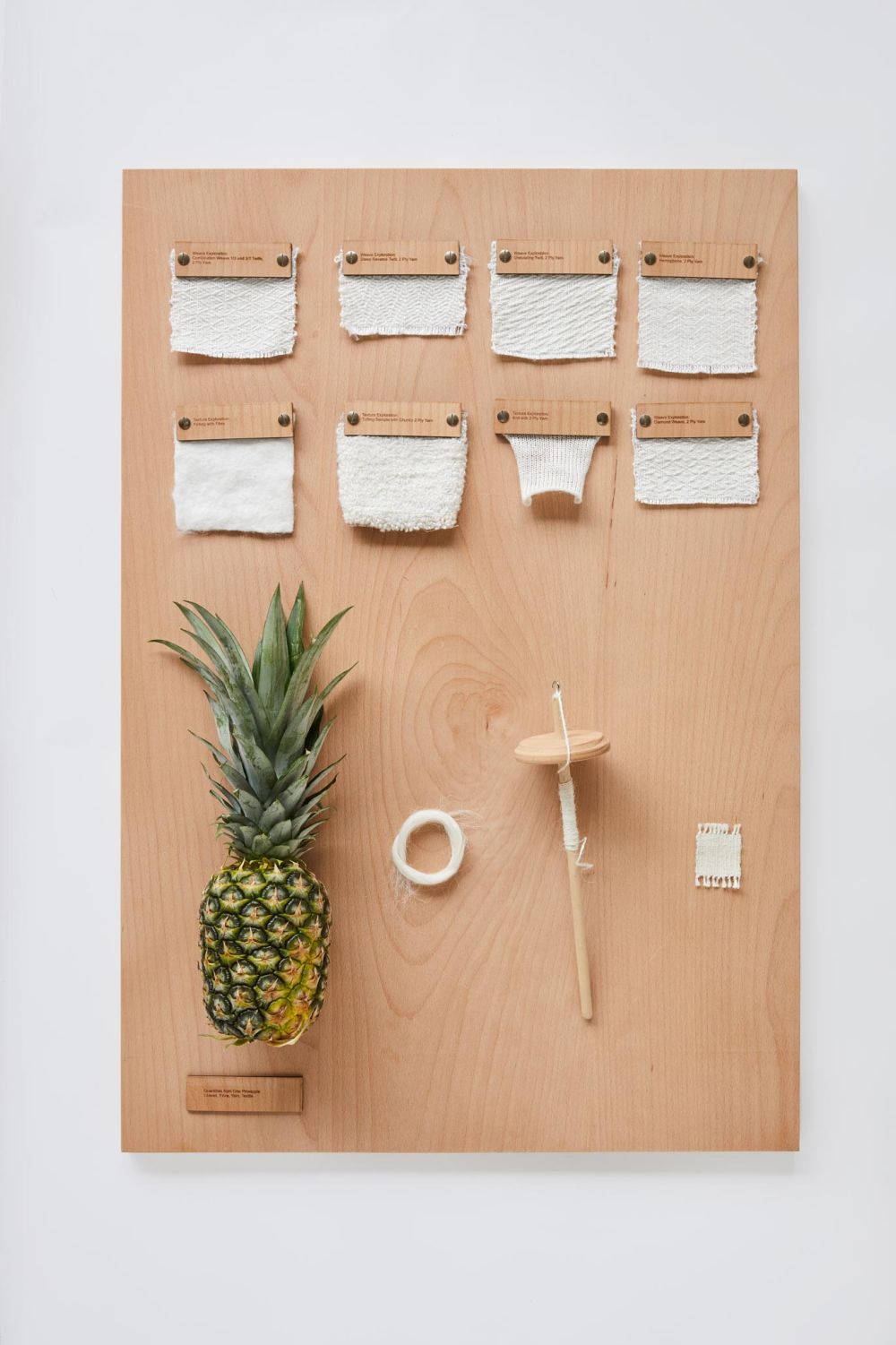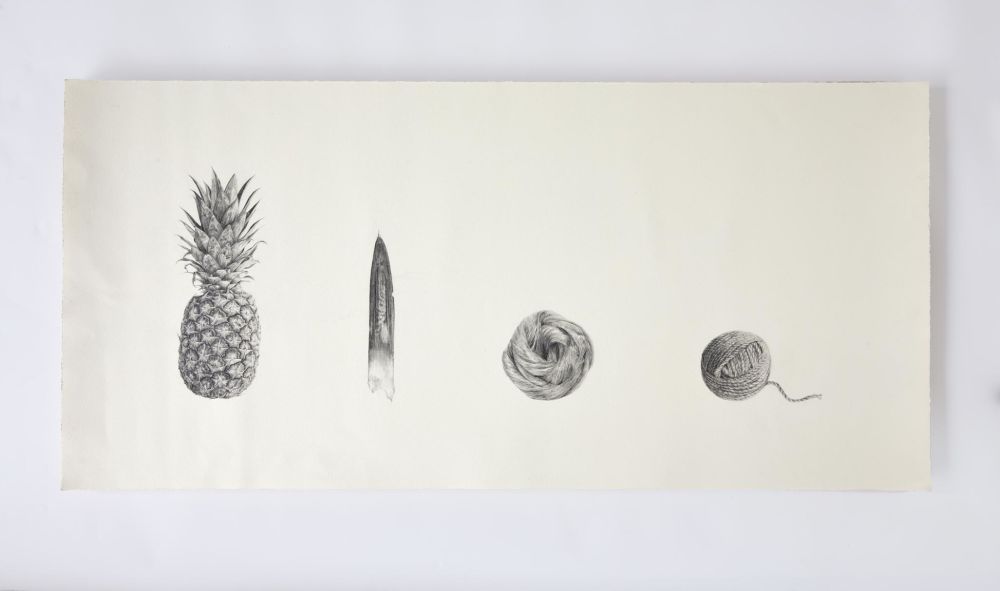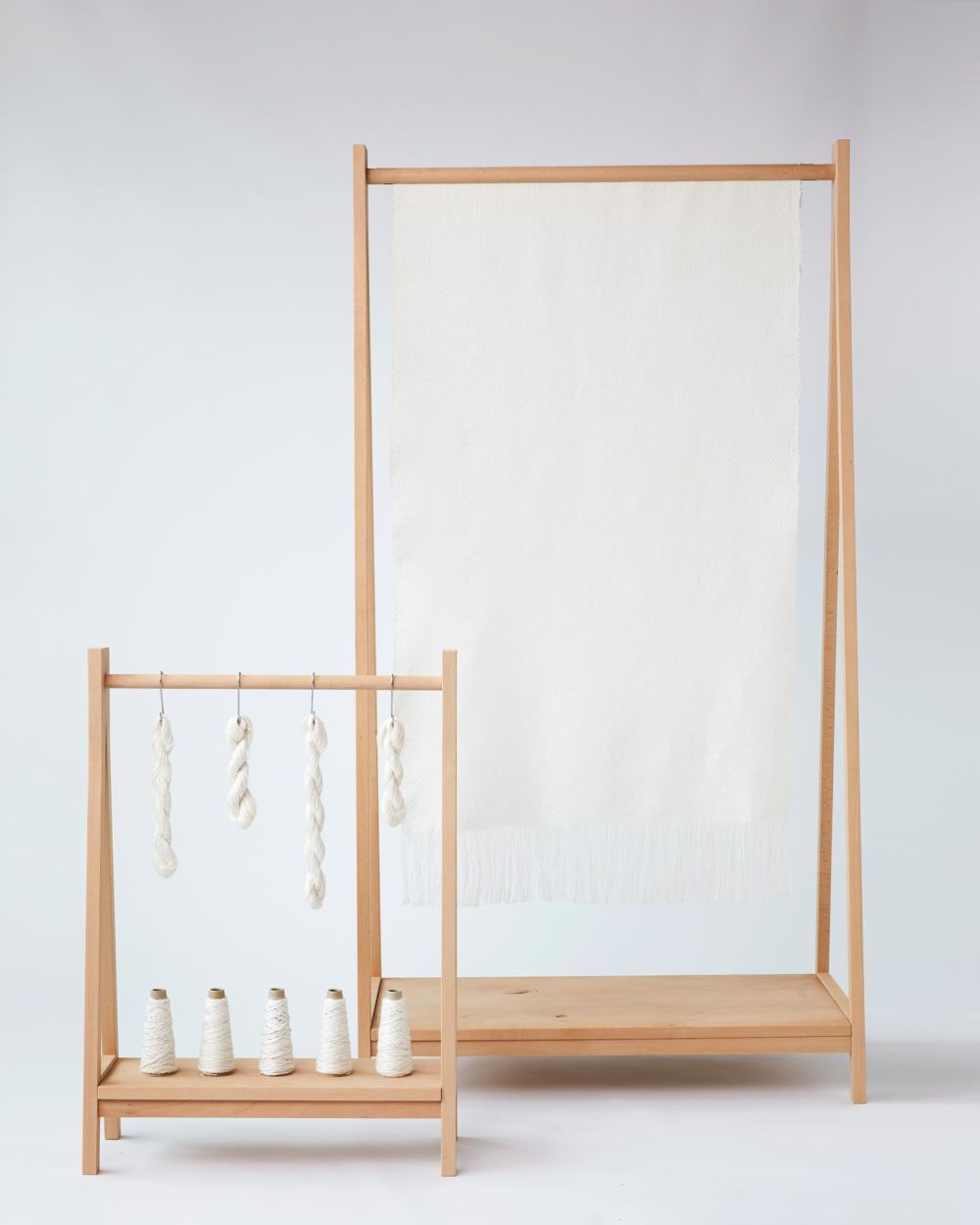We talk to recent graduates exhibiting in Designing in Turbulent Times, currently on show at the Lethaby Gallery. First up, designers transforming waste.
Waste is an artificial concept. These three designers all work with abundant materials, from defunct technologies to industrial by-products.
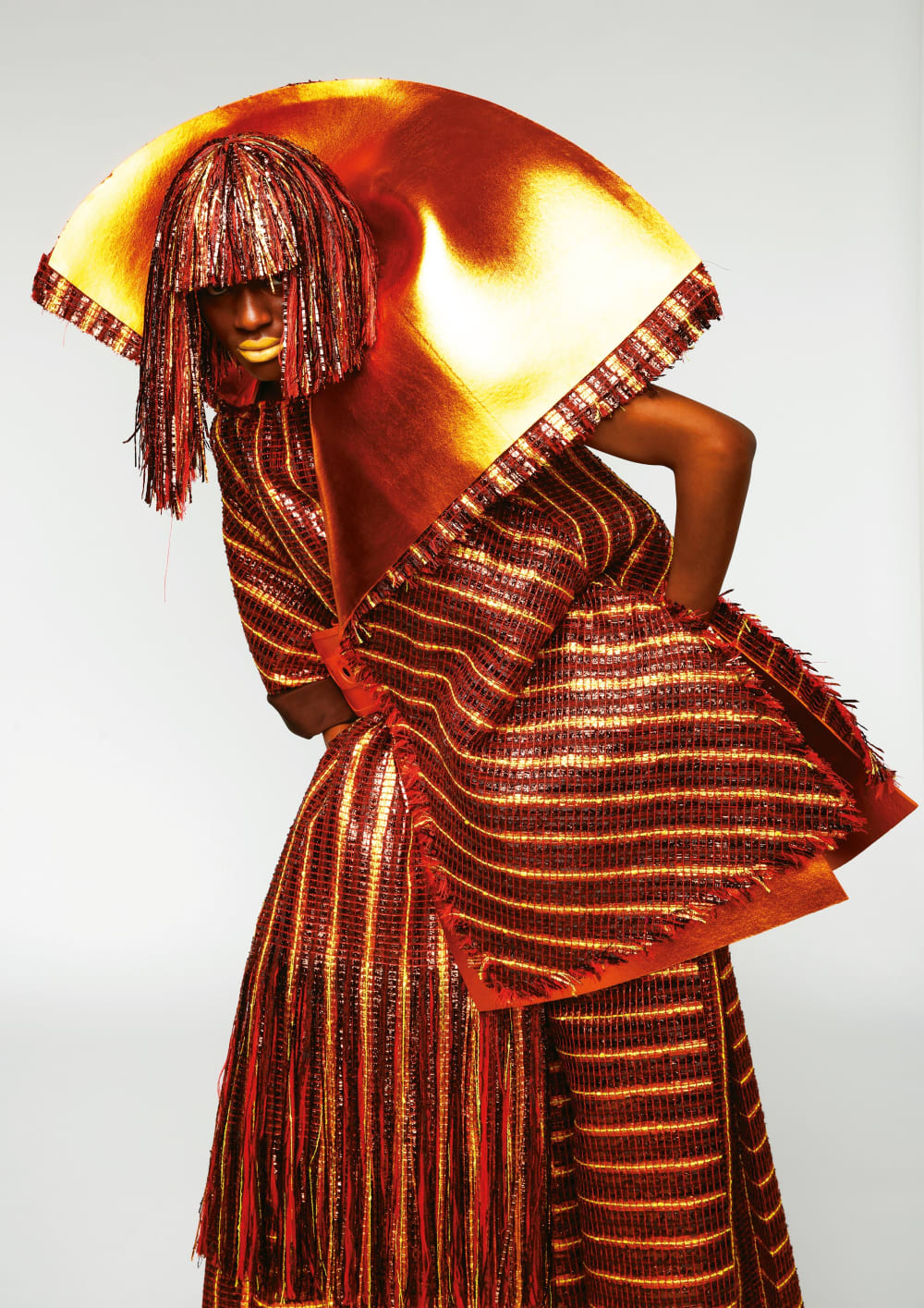
It Was Better Tomorrow, Benjamin Benmoyal, BA Fashion: Fashion Design with Marketing
Benmoyal’s collection is made from electronic waste and yarns from unsold and surplus stock. The fabrics are woven out of VHS cassette tapes collected by the designer, together with left-over yarns from textile companies.
What inspired your collection?
"When I arrived at Central Saint Martins, I was just looking. I wanted to find a way to feel better and less pessimistic about our world after years spent in the army as a commando paratrooper. I started to read books like Hope in the Dark by Rebecca Solnit. I kept wondering why now we idealise the past and have almost no hope in the future, whereas back in the late 60s people where dreaming about the 21st century as something great.
Re-using something from the past like cassettes to make something new was my way to express those thoughts visually. I don’t see a future without sustainability at the centre of everything we do; upcycling materials like cassette tapes – which are useless in our digital world – was perfect. Later I combined them with yarns from factories’ dead stock to create colour combinations inspired by artists like James Turrell and Olafur Eliasson."
Do you think of yourself as a sustainable designer?
"Well… what does that even mean – a sustainable designer? If a chef is cooking with good, organic products do we call them 'a sustainable chef'?"
What is the role of designers in society's collective push for a more sustainable way to live?
"Telling people to buy or not to buy something is not the best approach. To my mind, the role of a designer is to make the most attractive product possible (made in a sustainable way) that will provoke desire. Even someone who wouldn’t choose a sustainable product at first would buy it if they desires it."
Gallery
Wool: Re-Crafted, Nathalie Spencer, MA Material Futures
In response to the high environmental impact of sheep farming, Spencer proposes a vegan alternative to wool. Fibres are extracted from the discarded pineapple leaves from markets and juice bars. They are then spun into yarns, before being woven into fabrics. The final material is biodegradable and compostable.
How did your project begin?
"I was fascinated in the circular economy and had been doing research into the Ellen MacArthur Foundation, so that was my starting point. As animals are a significant contributor to global pollution, my work for many years has taken a vegan stance. I therefore began looking into the use of animal products within fashion and textiles. Realising that there were numerous innovations for many animal-derived materials including leather and silk, I was really interested as to why wool had not yet been addressed."
If you could change one thing to make us live within our planet's means, what would it be?
"I would ask all consumers to adopt a plant-based lifestyle. Current consumption at such a rate is destroying our planet, resulting in catastrophic effects such as deforestation, species extinction and global warming. Reducing our intake in terms of our diets, clothing and textiles, and therefore becoming more conscious consumers, would have significant effects towards halting and preventing climate change. We, as consumers, have so much power to make this happen."
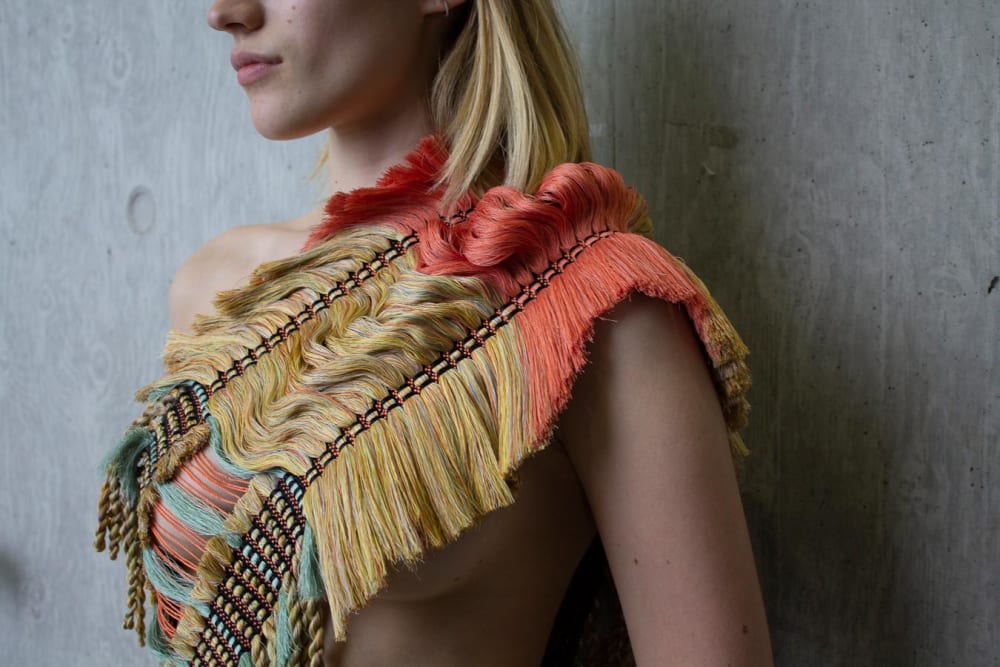
Waste Not, Want Not, Alicia Rowbotham, BA Textile Design
Rowbotham’s collection of luxury fashion accessories is produced from restored textile manufacturing waste. Waste Not, Want Not demonstrates that designers can help revalue materials which would normally be incinerated or sent to landfill.
What was the experience that sparked your project?
"I was visiting several industrial textile mills in Bradford, a city known for centuries-old textile industry and many generations of weavers. I noticed a reoccurring issue with material waste and its disposal. Speaking to the mills’ operations managers, I realised there was a real lack of infrastructure and creativity to reuse or repurpose discarded material. So I started collaborating with several mills interested in seeing the potential in their waste material. Since the degree show, I’ve had more mills coming to me interested in developing the circularity of their businesses as the pressure builds for brands to become more sustainable."
Do you think of yourself as a sustainable designer?
"I have always been interested in sustainable design but my time studying at Central Saint Martins has allowed me to focus on that and understand the consequences of not designing responsibly. I wrote my dissertation on the environmental devastation caused by fast fashion and subsequently all my work has been sustainably-led."
What is the role of designers in the push for sustainability?
"Designers have a responsibility to explore and change existing systems that are outdated and no longer sustainable. I believe designers from all disciplines should be focusing on material innovation and sustainable design as there is no value in thinking any other way."
Designing in Turbulent Times is at the Lethaby Gallery, 14 September – 27 October.
